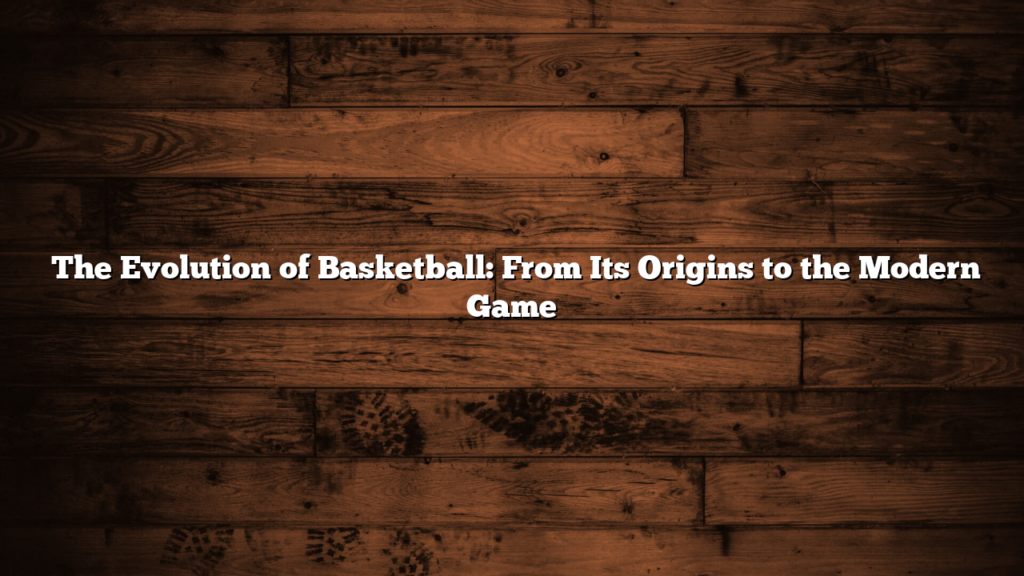
The Evolution of Basketball: From Its Origins to the Modern Game
Introduction
Basketball is one of the most popular sports in the world, with millions of players and fans across different continents. From street courts to professional arenas, the game has evolved significantly since its invention in 1891. Over the years, basketball has seen changes in rules, playing styles, training methods, and global influence.
This article explores the origins of basketball, how the game has evolved over time, key developments in playing styles, and the impact of modern technology on the sport.
The Origins of Basketball
Basketball was invented in 1891 by Dr. James Naismith, a Canadian physical education instructor in Springfield, Massachusetts. His goal was to create an indoor sport that could keep students active during the winter.
1. The First Game
Naismith nailed a peach basket to the wall as a goal.
Players used a soccer ball instead of the modern basketball.
The first game had nine players per team instead of today’s five.
There was idtoto4d dribbling—players had to pass the ball to move it.
2. Early Rule Changes
The bottom of the basket was removed so players didn’t have to climb to retrieve the ball.
Dribbling was introduced in the early 1900s.
The number of players per team was reduced to five by 1897.
The game became faster and more skill-based.
Basketball quickly gained popularity and was officially recognized as a college sport in the early 1900s.
The Growth of Basketball in the 20th Century
1. The Formation of the NBA
The National Basketball Association (NBA) was founded in 1946 as the Basketball Association of America (BAA) before merging with the National Basketball League (NBL) in 1949. The NBA became the premier basketball league and helped spread the sport globally.
2. Key Rule Changes
Several major rule changes made basketball faster and more entertaining:
24-Second Shot Clock (1954): Forced teams to take a shot within 24 seconds, preventing slow, defensive play.
Three-Point Line (1979): Added an extra scoring option and changed offensive strategies.
Defensive Three-Second Rule (2001): Prevented defenders from standing in the key for too long, increasing offensive movement.
3. International Expansion
The Olympics introduced basketball in 1936, making it a global sport.
The Dream Team (USA, 1992) dominated the Olympics, increasing basketball’s global popularity.
Today, players from over 40 countries compete in the NBA.
The 20th century laid the foundation for basketball’s modern growth and popularity.
How Playing Styles Have Changed
Basketball has evolved significantly in playing styles and strategies.
1. The Era of Big Men (1950s–1980s)
Centers and power forwards dominated the game.
Players like Bill Russell, Wilt Chamberlain, and Kareem Abdul-Jabbar controlled the paint.
Scoring mostly happened near the basket, with little outside shooting.
2. The Rise of Fast-Paced Offense (1990s–2000s)
The game became quicker and more athletic.
Teams focused on fast breaks and perimeter shooting.
Players like Michael Jordan, Kobe Bryant, and Shaquille O’Neal defined this era.
3. The Modern Three-Point Revolution (2010s–Present)
Teams now rely on three-point shooting more than ever.
The Golden State Warriors, led by Stephen Curry, changed how basketball is played.
Analytics show that three-pointers are more efficient than mid-range shots.
Basketball has evolved from a physical, inside-scoring game to a fast-paced, skill-driven sport.
Training and Technology in Modern Basketball
Today’s players are stronger, faster, and more skilled due to advanced training and technology.
1. Strength and Conditioning
Players follow customized training programs for speed, agility, and endurance.
Weight training helps build strength without reducing flexibility.
Recovery techniques like cryotherapy and nutrition plans improve player longevity.
2. Sports Science and Analytics
Teams use data analytics to track shooting percentages, player movement, and defensive efficiency.
Wearable GPS trackers monitor player workload to prevent injuries.
Coaches analyze real-time game data to make in-game adjustments.
3. Virtual Reality (VR) and AI in Basketball
VR allows players to simulate game situations for better decision-making.
AI-driven scouting helps teams find hidden talent worldwide.
With advanced technology, players train smarter and perform at higher levels than ever before.
The Future of Basketball
Basketball continues to evolve, with several exciting developments on the horizon.
1. Expansion of Global Leagues
More countries are investing in professional basketball leagues.
The NBA is focusing on Africa, China, and Europe for talent development.
2. New Playing Styles and Tactics
Future teams may focus on positionless basketball, where all players can shoot, pass, and defend.
Small, fast lineups could replace traditional big men in some systems.
3. Technological Innovations
AI-driven coaching will help players improve their game automatically.
Smart courts with real-time performance tracking may become common.
Interactive fan experiences through VR and AR technology will enhance the game-viewing experience.
The future of basketball looks faster, smarter, and more global than ever before.
Conclusion
Basketball has come a long way since its invention in 1891. From a simple game with a peach basket to a high-tech, global sport, it has constantly evolved. Innovations in playing style, training methods, and technology have transformed basketball into one of the most exciting sports in the world.
As the game continues to change, one thing remains certain: basketball will always captivate fans and inspire players worldwide.


